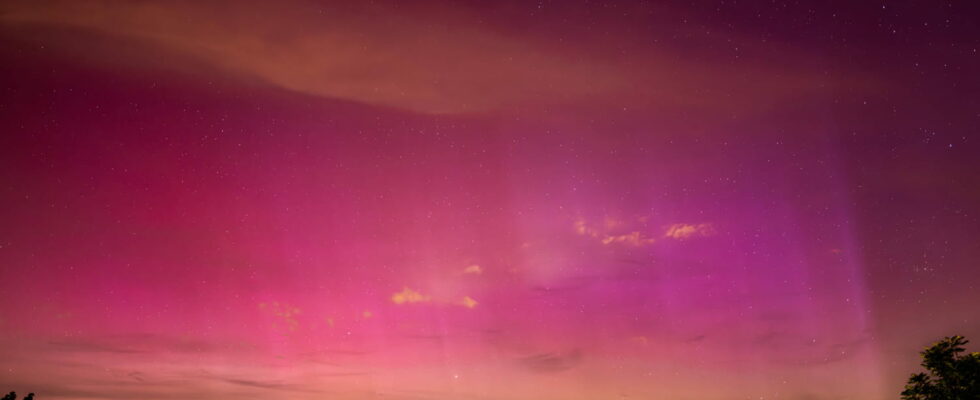AURORA BOREALIS. If you missed the Northern Lights in May, all is not lost. Conditions are ideal, and the sky could offer you a pretty show this week.
Seeing the Northern Lights is a dream for many people. While this phenomenon is common in Lapland or in Scandinavian countries, it is rather rare in France. So when the sky revealed its wonderful colors on the nights of May 10 to 12, many of you looked up at the sky and took out your cameras. If you missed them, good news, they could be back in the sky this week.
To be able to observe the northern lights, several conditions must be met:
- High solar activity increases the chances of seeing auroras. This activity is often measured by the KP index, which ranges from 0 to 9. The higher the index, the more intense the activity. You can track this index on the SpaceWeatherLive website. Over the past few days, solar activity has been high, which increases the likelihood of seeing the northern lights.
- Clear skies are essential. Clouds can easily obscure the auroras.
- Limit sources of light pollution.
The solar activity in the sky last weekend could offer you a beautiful spectacle in the hours or days to come. As astrophysicist Éric Lagadec on X, a sunspot named AR3766 has generated several solar flares that face the Earth. This phenomenon could result in the appearance of northern lights.
Several solar flares occurred yesterday. Material from the Sun seems to be on its way to Earth. Will we have beautiful auroras tomorrow or the day after?
To monitor !! https://t.co/dcraFaG1fp
— Eric Lagadec (@EricLagadec) July 28, 2024
When will we be able to observe them in the French sky? Franceinfo asked the question to Olivier Katz, space weather forecaster at the Operational Center for Space Weather in the Alps, and founding member of the AurorAlpes association. If the phenomenon is unpredictable, “there is a chance of having more intense aurora borealis than normal this week, Tuesday, Wednesday and Thursday” he confided to our colleagues. However, if there are aurora borealis, they will not be of the same intensity as last May. “If we ever see something, it could correspond to a luminous grayish spot, visible to the naked eye, at the horizon, to the north. In photos, with a 4 to 7 second pause, we could see reddish pillars appear” he explains.
COMEA, the Alpine Space Meteorology Operational Center, also indicated on its X account that “geomagnetic conditions are active” and that “solar flares are facing the Earth”. It also wonders about the possibility of observing the northern lights.
Aurora alert?
Since 2am tonight, geomagnetic conditions have been active. Solar flares are facing the Earth.
If the magnetic conditions are more favorable, we could reach the G2 – G3 scale.
What can we hope to see?
— COMEA (@COMEA_sw) July 30, 2024
So if you feel like it, look up at the sky over the next few nights, only if the sky is clear. Apps and websites dedicated to predicting the aurora, such as AuroraWatch UK or Aurora Service, provide precise information on cloud cover and the expected KP index.
